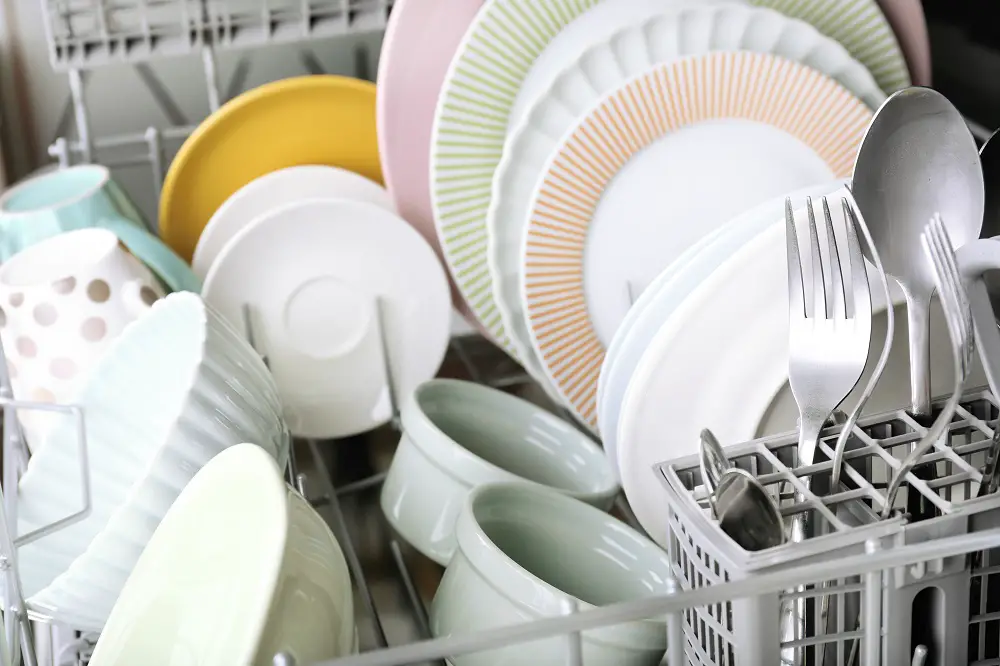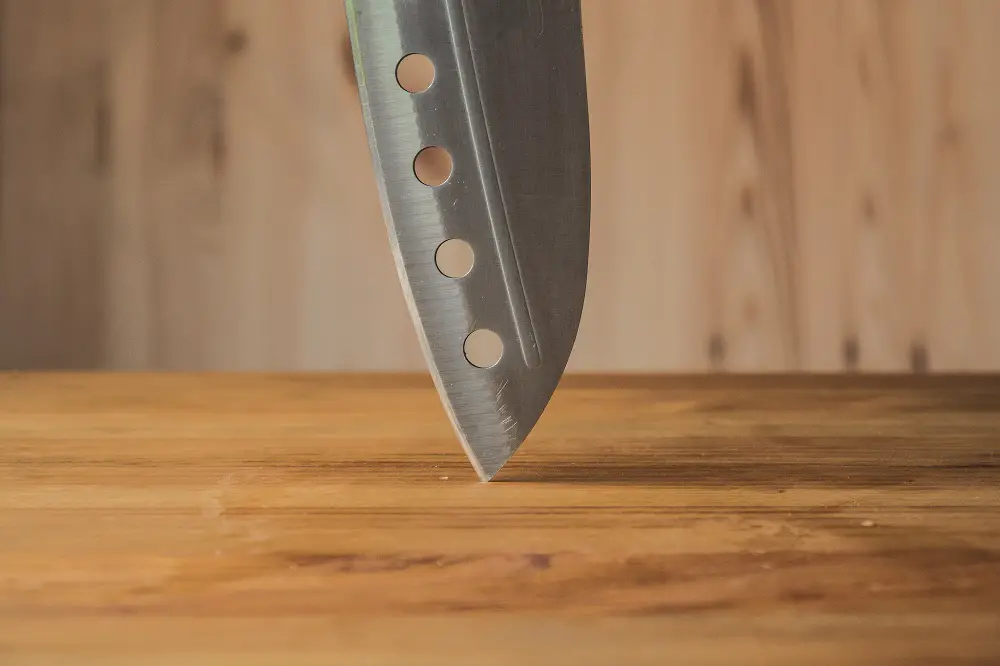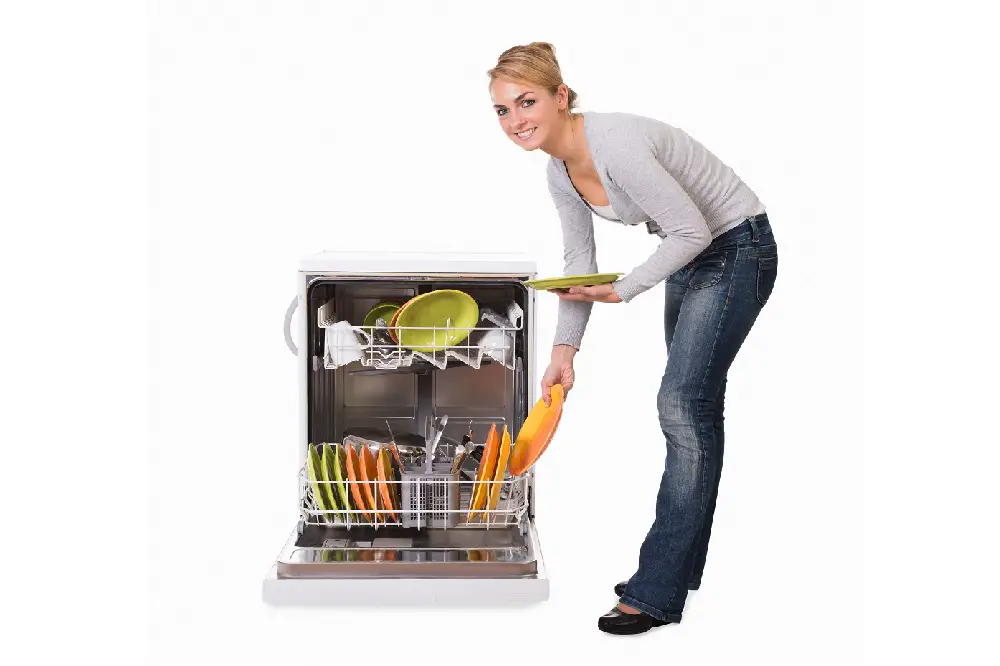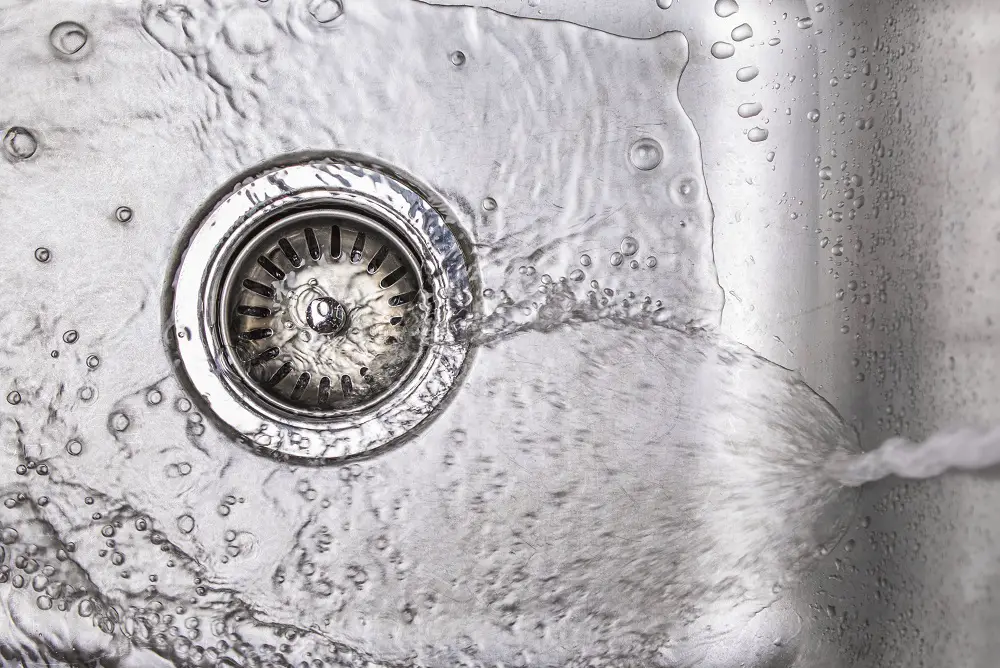Portable dishwashers are designed to make our lives easier and save us time otherwise spent on manually washing dishes, but that’s not to say they don’t come with a need for maintenance every now and again.
Cleaning the drain of a portable dishwasher can be done by using baking soda and hot water if the hose is not clogged completely. A full obstruction can be removed with a hard metal wire and pliers to form a hook.
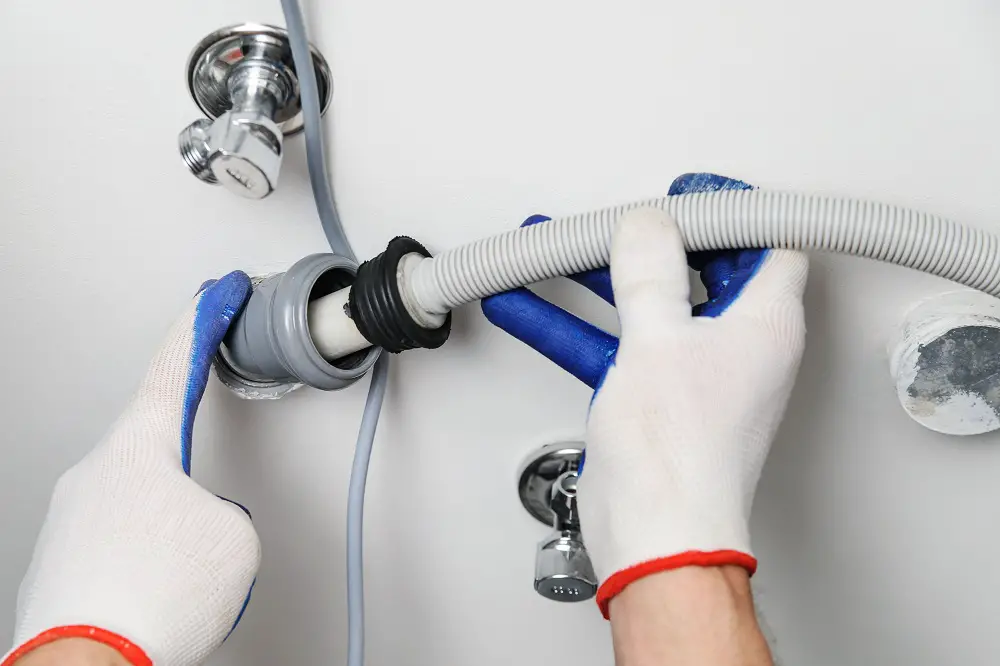
Table of Contents
What is a Portable Dishwasher?
As the name suggests, a portable dishwasher is a dishwashing facility that is usually on wheels or casters, allowing for quick and easy mobility. And unlike a built-in dishwasher, it can be maneuvered out of the way to preserve space in small kitchens.
Countertop dishwashers can be an ideal solution for many situations, including tenants not being able to have a built-in dishwasher, those short on space in their homes, RVs, and more.
Portable dishwashers work like regular washers but do need a different set up.
(Read more here: How Do Portable Dishwashers Work?)
How they operate is you would roll your portable dishwasher close to the sink and connect its hose to the sink faucet, making sure that the appliance is able to reach a power outlet to be plugged in.
You are then able to load it with your dirty dishes and start the appropriate cycle. The dishwasher will then drain itself into the kitchen sink via an attachable drain hose and a timer-controlled pump.
How to Clean Your Portable Dishwasher in 7 Steps
However, sometimes a dishwasher (or the drain) just needs a darn good clean to make sure it continues to drain properly. Here is how to do that:
1) Disconnect & lock the washer
Be sure to disconnect your countertop dishwasher from your electrical outlet before cleaning your appliance. Also, make sure the wheels or casters are in the ‘locked’ position. For other safety information, please refer to the owner’s manual.
2) Clean the spray arms
Open the door of your countertop dishwasher and remove any dirt particles and debris from the upper and lower spray arms using a cotton swab or a small clean cloth.
If the spray arms are particularly dirty, you can unscrew them and clean them in your kitchen sink, if that’s easier.
This part of the process is important because each spray arm, over time, becomes coated in food particles, which will begin to make using the dishwasher ineffective, because it will make the clean water being pumped in instantly dirty.
3) Clean the filter
The filtration system will typically unscrew and you will then be able to remove food debris and other grime using something like an old toothbrush or other types of a soft brush, or by scrubbing it in the sink and rinsing it with warm water.
Check to make sure there isn’t anything obstructing the filter, like a broken piece of utensil or cutlery, or a tough food item, such as a small chicken bone. Ideally, this should be done after each use.
4) Remove kinks in the hose
Now locate the drain hose and unbend/straighten any kinks that may have formed. This will ensure the draining process is effective and that water flows as it should. Bent or kinked drain hoses can result in a clogged drainage system.
If drain hose clogging is a notable problem here, you can use your garbage disposal (if you have one) to clear the drain hose of any food, grime, or limescale obstruction.
5) Clean the hose
If your hose is not completely clogged you should try to clean it with baking soda and vinegar:
- Pour a cup of baking soda and vinegar (1:1) into the hose and wait for 20 minutes
- Boil water to approximately 185°F (85°C)
(Don’t exceed the temperature as it may damage the hose or sealing) - Pour the water into the hose and wash out the dirt
If your hose is clogged you’ll need to apply mechanical force to the hose interior.
- Warming up and soak the clogging by filling in hot water
- Use a hard metal wire that can not be bent easily
(available in every hardware store) - Push the wire into the hose
You will feel the clogging and also its resistance - Try to loosen the clogging
You can do that from each side to improve the effect. - Remove clogging with a hook in the wire
Use a plier to form a hook in the wire. Put the wire back into the hose, drill it into the clogging and remove the clogging by pulling the wire out.
6) Clean the drain valve and pump
Check the drain valve and pump to make sure it isn’t clogged and remove waste properly.
7) Check the hose
Portable dishwasher hoses are very stressed parts because the appliance will be assembled pretty often. This usually leads to more wear and tear over time. Check for any damage to your drain hose.
If you live in a hard water area, it can be wise to check the well-being of your drain hose more regularly to ensure all is as it should be.
As with most things, the best cure is often prevention – especially when it comes to clogging. Keeping on top of your portable dishwasher’s cleaning maintenance is the best way to make the process quick and easy and prevent the drain from becoming clogged.
Dishwasher Cleaning Tips
If you’ve cleaned your dishwasher using the above method and you’re noticing your dishes aren’t coming out as clean as they should be, here are some of the best tips to get your appliance cleaning properly again:
- Clean the inside of the dishwasher hose using hot water and good, strong dish soap.
- Make sure you’re using enough dishwasher detergent when you use your appliance.
- Clean the dishwasher basket in the kitchen sink to remove any food, grease, or grime from the plastic.
- Make sure your sink drain is clean and unclogged.
Sink drain cleaning products are available, but these chemicals are often harsh and dangerous, so you can clean your drain using other products, such as bleach, baking soda solution, vinegar, or limescale remover.
A clogged sink drain will make using your dishwasher harder and may potentially overflow.
If you have a garbage disposal, use this regularly. - Refer to the manufacturer’s instructions for any other advice if you’re noticing your dishwasher isn’t draining correctly.
- Make sure the top rack and the bottom rack of the dishwasher are clean and not coated in grime or food debris.
- Make sure the dishwasher door is closed properly during its cycle.
If it becomes dislodged or slightly open during the rinse cycle, this may halt the process and you may end up with only partially-cleaned dishes. - Check the drain hose connection.
Because portable dishwashers are often moved around a lot, it can be easy to knock the connection without realizing it, so check whether it’s firmly in place before using your appliance. - Check for air gaps.
Cleaning Your Sink Drain
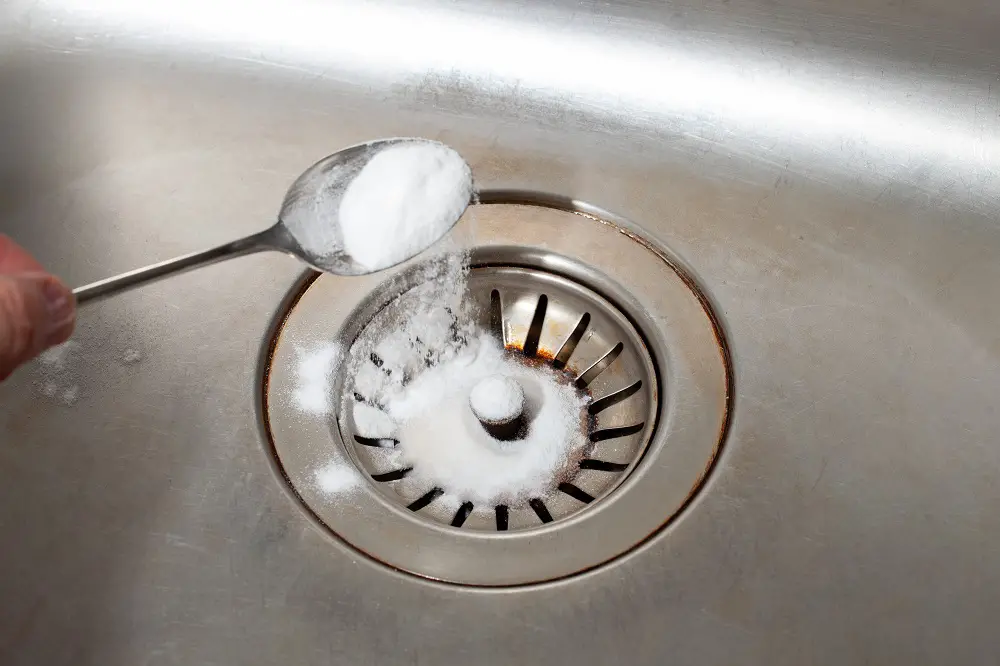
Keeping your sink drain clean is a crucial part of good kitchen hygiene. And again, if you’re not crazy about using harsh chemicals, you can effectively clean the drain using everyday products:
- Boil some water to circa 185 degrees Fahrenheit (85°C).
- While your water is reaching its temperature, pour half a cup of baking soda and half a cup of vinegar down the sink and allow it to sit for circa 20 minutes.
- Pour the hot water down the sink to remove the products and any dirt build-up.
- If your sink is clogged, invest in a plunger or hire a plumber to investigate the issue further.
Please note: do not allow the water temperature to exceed the above recommendation, as boiling water can damage your pipes.
Dishwasher Cleaning: FAQs
Where is the drain on a portable dishwasher?
There isn’t a built-in drain on a portable dishwasher. In order to use the product, it needs to be connected to your kitchen faucet via a hose.
Why is there water in the bottom of my portable dishwasher?
If you’ve noticed a pool of water building in the bottom of your portable dishwasher, this indicates that something is clogged within either the drain line, drain hose, or drain pipe, or there is an air gap between the dishwasher and your kitchen sink.
What can I use to clean sludge from the drain hose?
Again, hot water and baking soda or vinegar will do the trick. Fill a cup with the product of your choice and let it sit for 15-20 minutes, then add some hot water to the basket to clean away the build-up. This should be done every time you clean your dishwasher drain.
Final Thoughts
Your dishwasher is only as effective as your cleaning skills! So to ensure your portable/countertop dishwasher is functioning at its best, ensure (at least) periodic cleaning and keeping your kitchen sink drain in good health.
And always keep a tub of baking soda in your kitchen.
